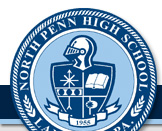|
Effects of Atmospheric Pressure on
Nanofiber Development: An Experiment
Six Years in the Making!
North Penn High School Engineering
Academy, Engineering Design and
Development: The Future is N.E.A.R.
(Nanotechnology Education and
Research) |
 |
Towamencin, Pennsylvania—February 19,
2016—
Engineering academy students, Nick
Seiberlich, Grant Reynard, Sean Sacchetti,
Jonathan Hollenbach and Mark Wallace are
currently in the process of studying the
effects of atmospheric pressure on nanofiber
development; an idea that is over six years
in the making.
The idea to study the effects of atmospheric
pressure on nanofiber development began
during the 2008-2009 school year. Students
in the EDD research team, NanoKnights: Dylan
Paproski, Brandon Rothenberger and Abu
Siddique were studying the effects of
polyethylene oxide (PEO) solution
concentration on the size of the envelope
cone of the collected nanofibers. One day,
in the middle of their experimentation, the
nanofibers didn’t collect on the collection
plate as was typically standard. Instead of
collecting in a circular shape on the
collection plate, the collection area had an
irregular shape. They ran another
experiment the same day and observed a
similar irregular result. The next day,
they re-ran an identical experiment to see
if it would happen again and it did not.
The team brainstormed possible solutions and
could only think of one potential reason:
there was a significant change in the
atmospheric pressure.
Brandon Rothenberger had observed that the
weather was extremely poor during their
experimentation; it was snowing. The only
idea they could come up with was that the
change in atmospheric pressure, due to the
poor weather, had an effect on the
morphology of the envelope cone and
therefore affected the area of collected
nanofibers.
The following school year, in 2009-2010,
Engineering Academy seniors: Andrew Koffke,
Christian Jacinto and Frederick Morgan from
the research team: Avant Guard, read about
research that NanoKnights had done and the
anomaly that was observed during
electrospinning in poor weather. Over the
next several weeks, they acquired materials
to begin designing and constructing a
chamber to test their hypothesis;
unfortunately, they were not able to
complete it before graduation.
Six years later, the project has been
started again with interest in getting the
chamber completed and tested. The students,
Nick Seiberlich,
Grant Reynard, Sean Sacchetti, Jonathan
Hollenbach and Mark Wallace have been
coming to school early to continue their
research and are now ready to test the
chamber. Their first experiment involved
electrospinning in the closed chamber at a
standard atmospheric pressure to verify that
fibers could actually be generated in the
vacuum chamber. They were successful! The
next step is to re-run the experiment; this
time, under a partial vacuum to analyze the
morphology of the envelope cone.
Stay tuned… much more exciting research is
coming!
If you are interested in learning more about
their research, the Engineering Academy or
the Technology and Engineering Education
Department, please visit their websites:
www.northpennengineering.org
or
www.thefutureisnear.org.

2016: 1st Electrospinning Test: Standard atmospheric pressure

2016: 1st Electrospinning Test: Standard atmospheric pressure - nanofibers.

2016: 1st Electrospinning Test: Standard atmospheric pressure

2009: Ideal nanofiber envelope cone

2009: Brandon analyzing irregular shaped envelope cone.

2009: analysis summary

2009: Data analysis for concentration analysis

2009: NanoKnights Poster.

2009: Chamber build in progress.

2009: NanoKnights.
|
|
 |
Press Contact:
Michael Boyer
North Penn High School Engineering
Academy
boyerma@npenn.org
215.368.9800 x1325 |
|


